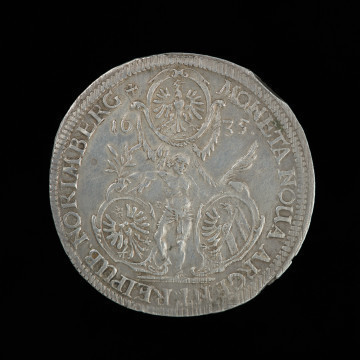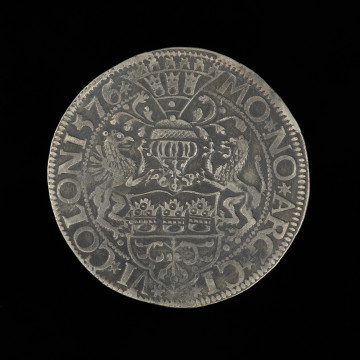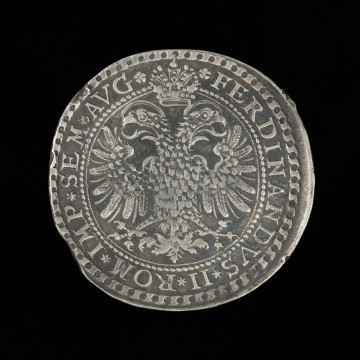
Thaler of the Reich
1624
National Museum in Szczecin
Part of the collection: European and non-European coins
The Spanish conquest of the New World in the 16th century resulted in a massive influx of bullion into Europe. As a result of trade contacts, American gold and silver permeated from Spain to other European countries, especially the Netherlands. In the 16th century, the Spanish Netherlands was one of the most economically developed and wealthiest parts of Europe, with prosperity built on trade. The money earned was reinvested in the means of production and development of the fleet, which led to more income. The hallmark of the economic power of the Netherlands at that time was the coins minted there. The presented thaler (daalder) was minted in the Dutch province of Gelderland by Philip II Habsburg (1527-1598). The place of issue is indicated by the inscription on the reverse of the coin, which surrounds the cross of St.. Andrew, the patron saint of the Netherlands. The thaler was minted during the brief period of Spanish domination in Gelderland and the expulsion of the troops of the United Provinces of the Netherlands rebelling against the Spanish Crown. The obverse of the coin is decorated with the so-called Spanish escutcheon with a royal crown, in the chain of the Order of the Golden Fleece. A small shield with the coats of arms of Tyrol and Flanders was placed over the coats of arms of Thuringia, the Archduchy of Austria, as well as the Duchies of Brabant and Burgundy, arranged in a chequered pattern. A Latin inscription: The Lord is my Judge (Psalm 117:06) complements the design. The motto was in line with the mentality of Philip II and his doctrine of absolutist monarchy, in which the ruler answered only to God for his deeds. In the last years of the 16th century, with more gold and silver imported from America than ever before, Spain was all but insolvent. When it declared successive bankruptcies (1557, 1575, and 1596) the Dutch, relying on Spanish silver, developed industry and trade contacts. When Philip II sought further loans from bankers in Genoa and Augsburg, spending 40% of the state's income on interest payments, the Netherlands flourished despite the ongoing war with Spain.
Mieszko Pawłowski
Other names
Daaler
Author / creator
Dimensions
cały obiekt:
Object type
coin
Technique
minting
Material
silver
Creation time / dating
Creation / finding place
Owner
National Museum in Szczecin
Identification number
Location / status

1624
National Museum in Szczecin

1576
National Museum in Szczecin

1624
National Museum in Szczecin
DISCOVER this TOPIC
Museum of King Jan III's Palace at Wilanów
DISCOVER this PATH
Educational path